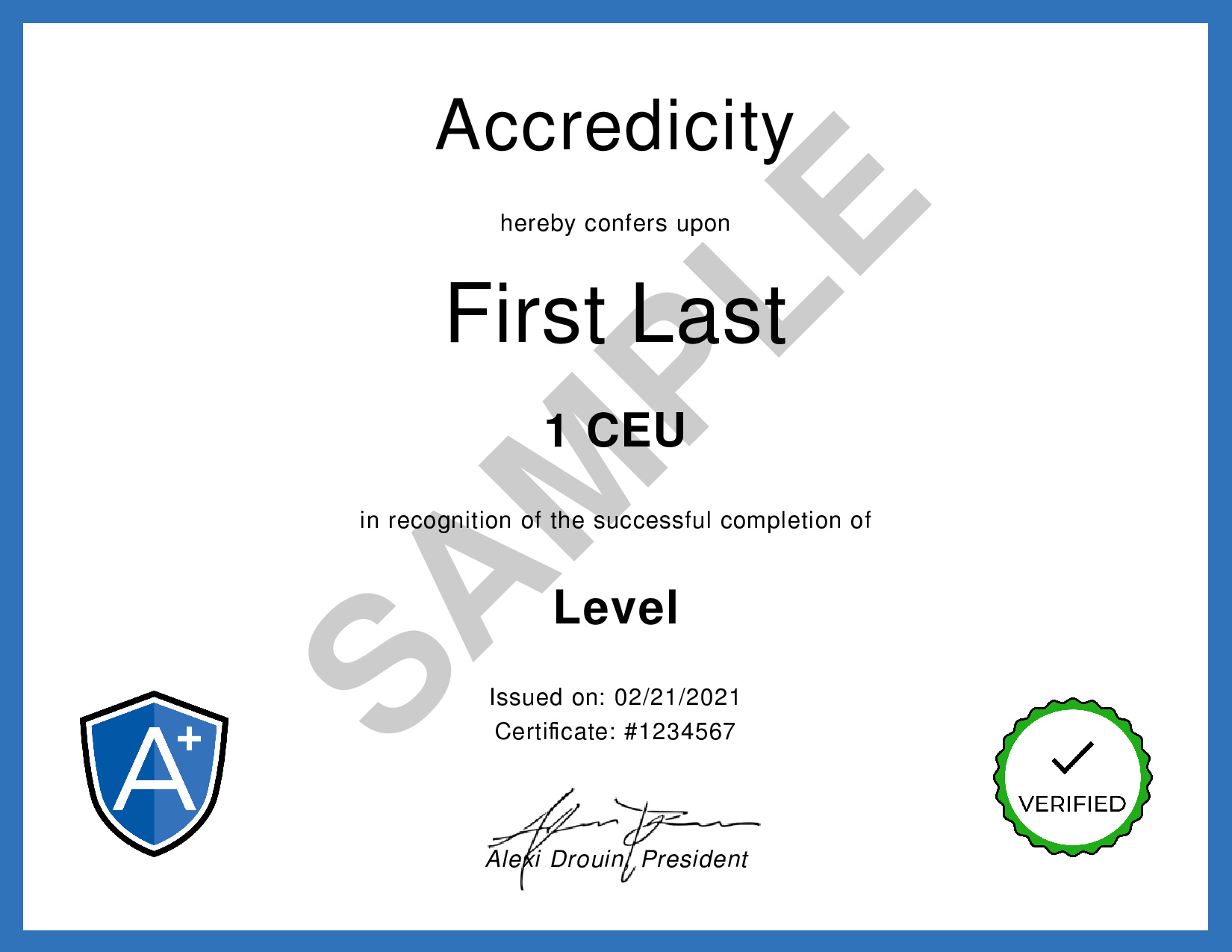How To Say No At Work | HBR
Reference: Harvard Business Review. (2020, October 14). How to Say No at Work [Video]. YouTube.
We Make Your Education Count

Get the Credit You Deserve and Become the Most Attractive Job Candidate by Earning and Posting A+ Badges to Your Linkedin Profile.
Sign Up to Get Started at Accredicity
|
Learn how to confidently say no at work with this helpful video tutorial! In this video, Christine Liu of Harvard Business Review explores the difficulty of saying no at work. She actively practices saying no to a range of scenarios with her co-producer, Andy, and then is put to the test with a surprise appearance from her boss, Maureen Hoch. Ruchika Tulshyan, author of The Diversity Advantage, shares tips for how to say no in a productive and effective way. She recommends considering the request, acknowledging and thanking your manager, using evidence to say no, and reinforcing or renegotiating the request. Liu learns that having a good relationship with your boss is key, but that it is especially challenging for people of color and women. Learning Outline1. Consider the request and evaluate whether you can do it. Instructional ContentSaying no is an important skill to develop in the workplace, especially when it comes to taking on projects or tasks that may be outside of your comfort zone or workload. It can be hard to say no, but it is an important part of managing your own workload and responsibilities. To help make saying no a bit easier, there are some important tips to consider. First, make sure to consider the request and evaluate whether you can do it. It may be important for your career, but you don’t want to stretch yourself too thin. Secondly, acknowledge and thank your manager for thinking of you, as this will help you remain seen as a team player. Thirdly, use data or evidence to explain why you won’t be able to take on the task. It's important to use facts and not emotions when you say no. Finally, reinforce or renegotiate. If your manager can’t accept your no, it may be possible to renegotiate the terms or priorities. It can be especially stressful for people of color and women to say no at work, as they may be seen as ungrateful or not team players. However, with practice and the right tips, it is possible to learn how to confidently say no in the workplace. Communication
|

Learning how to say no at work can be hard and intimidating, but it doesn't have to be! Christine Liu had to practice saying no to her boss, but with some guidance and practice, she was able to learn how to say no with confidence. She used a 4-step process to help her: consider the request, acknowledge and thank her boss, use evidence to explain her position, and reinforce or renegotiate her decision. It's like learning a new dance step - it may take some practice and a few missteps, but in the end, you'll be sure to impress! Video Quotes"The people that I have observed who are most effective of saying no, this is probably feedback I'd give you, is to just say it confidently. Sometimes it seemed like you were almost talking yourself into saying no. And I totally relate to that." - Maureen Hoch "First, consider the request and evaluate whether you can do it. Is it important for your career? And then secondly, acknowledge and thank your manager for thinking of you. Again, this will help safeguard being sort of branded as someone who's not a team player or difficult." - Ruchika Tulshyan "At the end of the day, if you have a good, healthy relationship with your boss, then they should be able to work with you when you come to them with a reasonable no." - Christine Liu Related Quotes"No is a complete sentence, and you don't need to explain it further." -Liz Fosslien "The people who can say no and stick to it, are the people who are going to be successful." -Liz Fosslien "If you can say no, you're more in control of your own destiny." -Liz Fosslien Competencies1. Negotiation Learning Outcomes1. Remember: Identify key aspects of the video related to saying no at work, such as the components of Ruchika Tulshyan's framework, the implications of saying no for people of color and women, and the importance of having a good relationship with your boss. 2. Understand: Explain why and how saying no is difficult, especially for people of color and women, and how to use evidence to say no in an effective and productive way. 3. Apply: Develop strategies for saying no respectfully and confidently, including taking the time to consider the request, acknowledging and thanking your manager for thinking of you, using evidence to say no, and reinforcing or renegotiating your no. 4. Analyze: Evaluate the effectiveness of various approaches to saying no at work, as well as the potential consequences of not saying no. 5. Create: Design a plan for practicing saying no in a way that is respectful and productive, utilizing the components of the framework provided by Ruchika Tulshyan in the video. 6. Evaluate: Critique your own performance in saying no in a mock scenario and reflect on ways you can improve. Sample Answers1. After watching the video, I learned how to say no in an effective and productive way. This includes considering the request, acknowledging and thanking the person who asked, using evidence to support my no and reinforcing or renegotiating the request. 2. Ruchika Tulshyan provided a good framework of how to say no in difficult moments. She also said it is helpful to have a good relationship with your boss. 3. Research shows that women, especially women of color, are penalized for appearing not grateful or not thankful for the opportunities that come their way. Therefore, it is important to be firm but polite when saying no. Christine LiuChristine Liu is a Workplace Strategist and Facilitator at The Know Agency, a strategy and design consultancy. Christine has more than 20 years of experience helping organizations and individuals design and implement successful strategies and solutions. She is the author of the book How to Say No at Work: the Art of Refusal and has a masters degree in Industrial and Organizational Psychology from the University of Toronto. She is an expert on how to say no at work because of her extensive experience and education in the field of organizational psychology. Christine Liu is affiliated with The Know Agency. AssessmentMultiple-Choice Exam Question: Which of the following is the most effective way to say "no" when asked to take on more work at work? A. Say "no" without explaining why Answer: C. Use evidence to explain why you cannot take on the work. Questions1. What are the different ways someone can say “no” in a professional setting? KeywordsSaying No at Work, Effective Ways to Say No, Productive Ways to Say No, Reinforce or Renegotiate, Relationship with Boss, Time Management Skills Facts1. Women and people of color are more likely to be penalized for saying no at work. Trends1. Create an online training course for managers about how to effectively communicate with their employees when asking for extra tasks or projects. SourceThis learning instructional guidance was formulated using the GPT-3 language model created by OpenAI. ShareSaying no at work can be hard, but with practice, it gets easier! 🤔 I learned how to say no in an effective, productive way with @RuchikaTulshyan. #SayNo #WorkLifeBalance #Productivity #Communication @Accredicity |








 16 Creds - Communication
16 Creds - Communication


